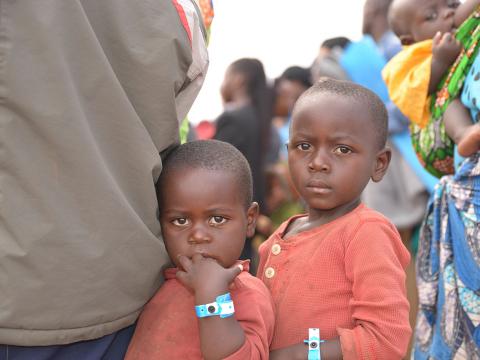Funding is falling but the number of displaced and vulnerable children isn’t

For millions of children this Universal Children’s Day brings little consolation. Brothers, sisters, daughters and sons are forced out of their homes and are constantly on the move because of conflict.
This blog cannot capture the untold suffering and uncertain future of the over five million children who are forced out from their homes and displaced due to conflict.
In an October report, the UN Refugee Agency warned that funding is falling increasingly behind as the number of forcibly displaced worldwide has grown. Four countries in the Horn of Africa – Burundi, South Sudan, Somalia, and the Democratic Republic of Congo – are among the world’s six most-underfunded refugee and displacement contexts (Afghanistan and Syria are the others).
A 2017 report by the Norwegian Refugee Council cites Ethiopia, Burundi, South Sudan, Central African Republic, and the Democratic Republic of Congo among the top 10 world’s most neglected crises. Less media attention and low interest by international donors are stated as compelling reasons for underfunding.
As the funding falls or stagnates, the number of children on the move isn’t.
A World Vision report released in June titled, Girls on the Move[1]warned about the increasing number of children constantly on the move stemming from political instability and conflict, estimating then that five million children in eastern Africa had been forced to flee their homes.
One of the girls featured in the report is Agnes (not her real name). Agnes was just 13-years-old when she was abducted by one of South Sudan’s armed groups to fight in the conflict. Upon her release in February 2018 after three years as a child soldier, she found out both her parents had been killed.
In the Democratic Republic of Congo, the life of millions of children is uncertain as the country goes into the presidential polls on December 23rd 2018.
A protracted humanitarian crisis has left at least 3 million children in need of education assistance in Somalia.
In July, I spent time interviewing families who had been forced out of their homes due inter-communal conflict in southern Ethiopia.
I witnessed untold suffering of children and their families in crowded unsanitary shelters in compounds of schools and churches, with barely anything to survive on. Children wandered about the compound, with nothing much to do.
Today the shelters have cleared, some families have returned to their homes, especially in areas where conditions allow. It will be a long road to recovery.
World Vision estimates that 40,000 pre-primary and primary school children missed at least five months of school due to conflict. School children have returned to extensively damaged classrooms, they lost virtually everything in the conflict.
Eight-year-old Tarikua, a grade two student, recalled how all her books had been destroyed in the conflict. “I only managed to preserve one,” she told me.
In September World Vision provided new books, pens and other personal items to over 450 school children affected by the conflict. It was some relief not just for children like Tarikua but also for their parents.
How can we help them have hope for a better tomorrow?
In Uganda, a just concluded (October 24th) refugee verification exercise confirms that the country hosts 1.1 million refugees, by far the largest in Africa, and third largest worldwide.
But funding is falling and humanitarian agencies are calling on international donors to share responsibility and increase funding, failure to do this will lead to a further decrease in assistance for refugees, more than 60 percent of whom are children, and host communities.
When you see the faces behind these stories, for example of children arriving at border points having walked for days to safety, or children lining up waiting to be registered as refugees you can’t help but be filled with compassion.
More can be done to rewrite their story. For example to ensure they go to school, they have enough to eat, they feel a sense of belonging, et cetera, just like other normal children.
In South Sudan, World Vision is running a programme to reintegrate children like Agnes back into formal education. At least 90 children in Yambio have returned to school and are being supported with school fees.
Through its global campaign, World Vision continues to educate people how they can be apart of ending violence against children.
Across settlements in northern Uganda, World Vision runs Child Friendly Spaces that includes schools that enable South Sudanese refugee children to access education.
In Rwanda refugee camps World Vision’s programmes are assisting refugee children to go to school, At least 27,000 from the DR Congo are supported with fees, from early childhood learning all the way to secondary school.
All these programmes require sustenance.
On this year’s Universal Children’s Day, let’s re-focus our hearts and minds on how we can help these displaced and vulnerable children have hope for a better life?
If you wish to support the work of World Vision in East Africa, please click here.
[1] https://www.wvi.org/africa/publication/girls-move
By Lucy Murunga, World Vision East Africa emergencies